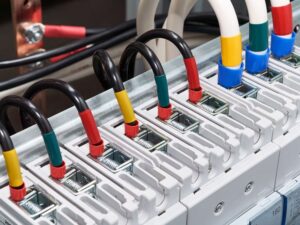In the search for dependency on nature, the efficiency of ventilation systems is very much needed. A decentralized heat recovery ventilation system is a highly valuable solution in such cases saving a lot of energy and improving indoor air quality. In this article, we shall understand the fundamentals of decentralized heat recovery ventilation.
At its roots, a decentralized HRV system works by transferring heat from outgoing warm air to the incoming air to be utilized in re-heating and air conditioning respectively. This process ensures the sufficiency of the fresh air and the reduction of heat loss, which is specifically beneficial in the cold climate.
The second thing that we are going to examine in this decentralized HRV is the heat exchanger. This device sets the stage for the exchange of heat between two air streams, and they make sure they do not get mixed. The use of thermal energy in the HRV systems are decentralized preconditions and the air is thereby delivered to the system reducing the load on heating systems and improving overall energy efficiency.
Furthermore, the HRV systems are designed to operate room by room thereby providing more choices and control as compared to those that are centralized. Adjustable ventilation settings can easily be achieved, which lets setting up the ventilation pattern according to the occupancy level and air quality parameters in different zones of the building.
Along with the decentralized HRV, ease of installation and maintenance is another significant merit. In contrast to centralized systems that demand a long distribution pipe and complex controls, a decentralized HRV unit can be fitted with ease into any building. It causes less disruption. Also, these products display modular designs that help their scalability and therefore they are well suited for various types as well as size buildings.
Along with energy saving, centralized HRV, of course, ensures a high level of indoor air quality which is achieved through adequately removing the impurities and residual moisture. This is especially advantageous in buildings that can have barriers to air entrance and the accumulation of harmful elements, thereby serving to eliminate the possibility of suffering occupants from respiratory-related problems now and then.
Final Overview
Decentralized heat recovery ventilation can be used successfully as a responsible method to create an energy-efficient and healthy indoor environment. The technology provides a sustainable solution to building ventilation by incorporating the energy exchange and natural ventilation principles aimed at creating a new environmental approach that is consistent with the modern vision of occupant comfort.









+ There are no comments
Add yours